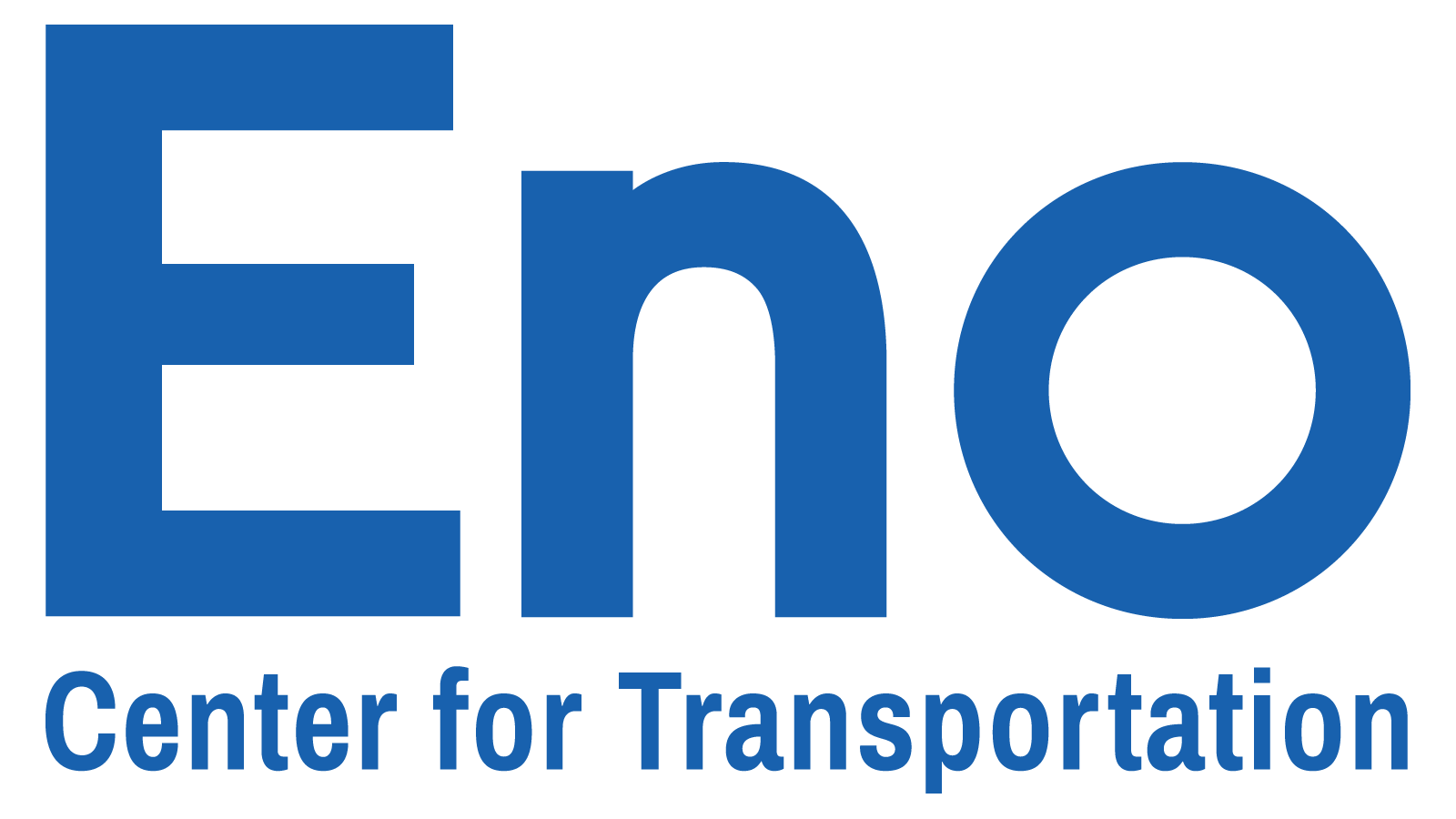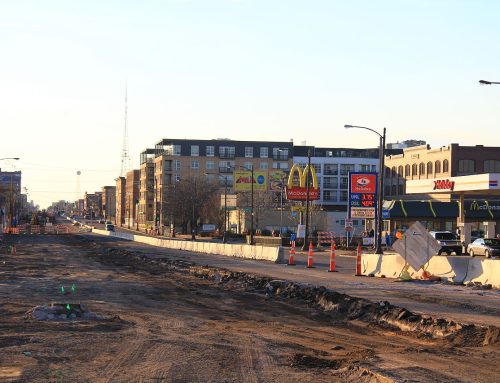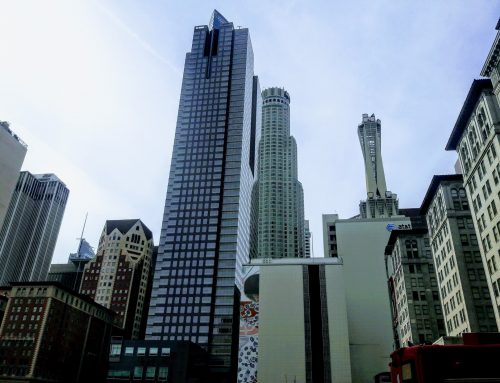Seattle
Seattle’s light rail system serves as a valuable case study since it has significant portions of track that are elevated and tunneled, making it comparable in terms of complexity to other U.S. and international projects. The region’s rapid growth and sizeable capital program offer several unique insights into its capacity to manage, oversee, and deliver major projects.
Table of Contents
Governance Overview
Sound Transit (ST) is the service name of the Central Puget Sound Regional Transit Authority, a public corporation created in 1993 by King, Pierce, and Snohomish counties to build and operate a regional high-capacity transit system. ST partners with transit providers throughout the region to provide a range of integrated transportation services, including Link light rail, Sounder commuter rail, express buses, Tacoma Link light rail, and bus rapid transit. ST also manages the regional ORCA fare card system. The agency is governed by an 18-member board of directors comprising elected officials from its constituent counties. Representation is determined by county population with one position is held by the Washington State Secretary of Transportation. ST services are funded by sales, property, and motor vehicle excise taxes levied within the ST taxing district as well as by federal grants, fares, and other revenue sources.
Washington State Department of Transportation (WSDOT) primarily funds highway projects, but also coordinates closely with ST. WSDOT has a dedicated 20-person staff with planning, engineering, and construction expertise to support ST’s project delivery, and its rail office also has an oversight role over Sound Transit. WSDOT also helps identify opportunities for ST to construct rail within its ROW.
King County Metro is the primary transit operator for the region’s most populous county, which contains the city of Seattle. King County Metro operates the region’s bus network and is contracted by ST to operate and maintain Link light rail. In 2019, King County Metro and Sound Transit renewed their agreement to continue integrated rail operations and management through at least 2023.340
Puget Sound Regional Council is the region’s MPO and conducts long-range regional planning for transit, though it has no direct involvement in project delivery.
System Overview
Rail transit in the region consists of the Sounder commuter rail line, three streetcar lines, and a single Link light rail line, the 1 Line. The 1 Line corridor traverses well-developed urban areas and operates in a tunnel between its northern extent at the University of Washington and the International District station in downtown Seattle. From that point, the line extends southward to SeaTac Airport and its terminus at Angle Lake Station on a combination of at-grade and elevated segments with a short tunnel. The region is currently constructing or planning several major Link system expansions (See Table 9).
TABLE 9: TRANSIT LINES PROFILED IN THE SEATTLE REGION

Note: the Central Link tunnel used an existing bus tunnel under downtown Seattle, reducing some tunneling costs.
*A single delivery method is not always used on an entire project.
** Projected costs for unfinished projects
*** Projected opening dates
Voters in the Puget Sound region approved three major ballot measures to fund the Link light rail system expansion: Sound Move (ST1) in 1996, Sound Transit 2 (ST2) in 2008, and Sound Transit 3 (ST3) in 2016.343 Each raised sales tax revenues in the counties in and around Seattle to plan and construct transit expansion across several modes. While analysis found that project scopes and budgets were often adjusted during the course of the projects due to unforeseen cost and schedule issues and did not meet their early targets, each phase of the 1 Line has been completed under the revised budgets.344 The initial portion was completed $117 million below the $2.44 billion budget. The U-Link extension was completed $200 million under budget and six months ahead of schedule.345 Similarly, the extension to Angle Lake station was completed for $40 million less than the original $383 million budget.346
The Northgate, Lynnwood, and East Link extension projects are funded under ST2 and will expand the system by 27 miles once completed. Under ST3, the agency will add 62 miles of new light rail for a total of 116 miles as well as 37 new stations for a total of more than 80 stations by 2041.347
In addition to tunneling in what local engineers and planners called “problematic soils,” projects in the Puget Sound region must conform to rigorous fire, seismic, and public safety standards that can add additional cost to projects. While Washington does not
experience earthquakes as frequently as California, they have historically lasted longer and overall can be more powerful. Seismic safety codes have also become more stringent over the last several years.348 For example, elevated guideways must be built to a higher standard in areas where certain soils pose earthquake risks. The seismic code also requires a significant amount of rebar for rail lines, which can further add cost.
Despite a growing staff and capital program, capacity constraints can still be a challenge in a complex expansion environment.
ST has grown and changed significantly since its formation in 1993 to deliver the rail and bus projects that voters first approved in 1996. At first, it had a small staff and relied heavily on external consultants. Since then, ST’s three major voter-approved capital expansion programs allowed the agency to grow its internal staff and gain experience delivering major projects. As of July 2019, ST has more than 1,000 employees.349
The agency’s growth has brought both benefits and challenges. Most notably, ST’s major capital program has allowed it to build internal experience and capacity delivering projects. The agency now has a sizeable planning and engineering team. While ST is able to do planning work in-house, it contracts out for all of its design work and construction management. Nevertheless, with multiple lines currently in planning or construction, often with varying project delivery methods (DB, DBB, CMR), ST has had challenges managing contracts.350
Agencies sometimes employ several different procurement approaches, and there is not always agreement about which approach works best.
ST uses a range of deliv ery methods for the contracts within its projects and will often use a mix of delivery methods within a single project ali gnment. The initial Link light rail segment was built using DBB, while the U-Link project included both DBB and CMR (the region calls the CMR delivery method “CM/CG”) contracts. The East Link project used DBB, DB, and CMR while the Federal W ay project is entirely DB. The Lynwood extension also two civil CMR contracts and one CMR contr act.351 While the agency has a detailed process to evaluate and determi ne which delivery method should be used on various projects, interviewees suggested three primary challenges with the region’s approach to the selection.
First is that the agency is often very involved with design even when using DB. In contrast to DBB, in which project sponsors review designs at 30, 60, and 90 percent completion, a DB procurement typically only requires two quick design reviews to allow the contractor to begin construction as quickly as possible. However, interviewees cited frequent interactions and reviews with DB designs, including a DBB-style approach to the design review process by requiring a 90 percent review, adding additional time. Others noted that the agency’s management team may comment too much on the contractor’s design and may not have enough trust that the contractor will meet their desired performance.
DB procurements ideally require less staff and time to oversee so long as an agency places enough trust in the performance criteria it provides to the contractor, and leaves enough room for creativity without being either overly prescriptive or too vague. However, ST has struggled with sufficiently incorporating its preferences and interoperability requirements in its design specifications for DB projects. Interviewees cited anecdotal examples where the contractor’s choice of components such as circuit breakers or rail clips met the project’s DB performance criteria, but did not match the same brand or style on other parts of the system. In these cases, modifying the desired specifications lead to further contract changes and scope modifications.
Finally, while DB and CMR approaches can save time, their procurements often take much longer than traditional DBB projects, eliminating some of the benefits of these models. For example, the procurement for the Federal Way project took nearly 20 months. While some of this is due in part to ST’s procurement process, there are also significant statewide procurement regulations and requirements that the agency is required to comply with, particularly for CMR projects.
Public entities must receive approval to use DB or CMR from Washington State’s Project Review Committee (PRC). Approvals can be granted for individual projects, or through a Public Body Certification. The process requires a public body to submit an application and demonstrate that the alternative contracting method will either have a fiscal benefit or help the entity meet its schedule or quality standard. ST received its CMR certification in 2013, and its DB certification in 2015 and both are renewed every three years.352 Previously, the agency submitted applications to the PRC to use DB and CMR on individual projects.
In order to receive a Public Body Certification, the entity must demonstrate that they have successfully managed at least one DB or CMR project in the last five years, as well as demonstrate that they possess the necessary experience and qualifications to evaluate, choose, and carry out an alternative delivery method.353 These regulations are a result of the state’s relative caution in responding to alternative delivery methods due to concerns from labor groups, contractors, and small businesses around fairness and competition, specifically over the ability to secure subcontracts.
ST’s challenges with procurement have created an environment that result in numerous contract change orders. While these technical changes can be relatively minor, if numerous they can quickly become disruptive to a project’s cost or schedule. An ST audit of a sample of 12 contracts on five major construction projects (totaling $2 billion) revealed nearly 300 change orders costing $172 million.354
Change orders are sometimes the result of site conditions that differ from initial plans and surveys, which are infrequent but have a significant impact. Unexpected underground soil or water conditions were responsible for $79 million in change orders (46 percent of the total). They can also be technical changes that are either a result of design or contract mistakes, which staff sometimes notice or uncover late in construction. More than half of these changes (160) were issued by ST because of mistakes or missing information in project designs or contracts. The audit suggested that increased investment in early underground exploration and a stronger design review process with standardized checklists could help curtail a significant amount of the change orders the agency encounters.
Officials also noted that the process for handling change orders is very regimented, takes too long, and involves too many people. In response, ST’s Board of Directors in 2018 changed policy to allow the board’s committees to approve up to $50 million (previously $5 million) for contracts, agreements, and land acquisition that fall under their jurisdictions, and raised the CEO’s approval authority to $5 million (previously $200,000) for construction, architecture, or engineering services contracts. The change also authorizes the CEO to approve up to $2 million in c ontracts for materials, technology, and other services.355
These changes intend to streamline and balance the number of change orders, contracts, and agreements that require board approval, and free up more time for the board to engage more deeply and productively on policy matters. Though these changes have been helpful, change orders must be reviewed by the contracting staff to ensure they fall within scope, the project controls group to verify they are within budget and timeline, and may also still have to be reviewed by the Board to ensure that the change is one that the agency wants.
Problems with procurements, specifications, and change orders led stakeholders in the region to develop strong opinions on which delivery method is the best for the region. Many believe that DB is the best approach but noted that agency staff need to be better at developing design specifications that are neither too broad nor too prescriptive and should cede more control over the design and design review process to the design-builder.
There is more concern and disagreement over the success of CMR. Some feel strongly that this delivery method had not worked out well for the agenc y and led to higher costs. CMR contracts can take significant time to negotiate, and lack the competitive pressure of other delivery methods, which can lead to a higher cost compared to DB contracts. Furthermore, CMR requires a different oversight approach than DB or DBB. ST’s experiences with multiple procurement approaches has made it difficult for it to understand the varying levels of control and management necessary for different project elements and delivery methods.
Extensive community outreach and planning processes can result in significant requests for betterments, which can be challenging if the agency does not have permitting authority.
Interviewees expressed frustration that the region spends significant time addressing community concerns without a clear and consistent process for constraining requests. One said that the region at large puts a “high value on leaving everyone happy.” This includes both during the environmental review and the planning process. The resulting environmental review and planning process typically takes five or more years and is a significant timeline driver, primarily due to threats of litigation, lengthy alternatives analyses, and sequencing. Projects in Seattle are also subject to environmental regulations under NEPA as well as the Washington State Environmental Protection Act (SEPA). While SEPA is not considered any more onerous than NEPA, the local review does include some additional components related to the region’s unique habitats.
In terms of sequencing, current FTA regulations state that project sponsors cannot complete final design or begin acquiring ROW until after the agency issues a Record of Decision (ROD). This is intended to prevent a conflict of interest by biasing the project sponsor in favor of a particular alignment. The FHWA, however, does provide project sponsors flexibility to begin early ROW acquisition prior to the completion of NEPA at their own risk.356
Additionally, officials expressed frustration that environmental review documents seem to be written to avoid litigation rather than to inform the public. Observers pointed to the alternatives analysis process where projects must analyze many different potential alignments for a project, often to shield agencies from procedural lawsuits and accusations that they failed to consider a certain alternative. For example, on the East Link project, ST identified 36 alternatives during the initial scoping phase, and advanced 27 of those for further review.357 The Final EIS examined 24 build alternatives.358 While a major project might warrant the review of many alternatives, the process remains lengthy and can also make it difficult for contractors to begin identifying utilities and subsurface conditions before the final alignment is chosen.
On earlier projects, there was a tendency for staff to avoid controversial questions about scope or alignments until later in the project planning phase, which would ultimately take longer and cost more to resolve. One example is the at-grade section of Line 1 that runs through the primarily lower-income and non-white Rainier Valley neighborhood. ST had initially ruled out the idea of putting that segment below ground but had to revisit the issue at the request of the community during the design phase.359 This required the agency to conduct additional studies, host public hearings, produce new cost estimates, and essentially prepare a mini EIS for the tunnel, leading to a nine-month delay until the agency ruled out the option. 360
Bellevue also raised concerns over the East Link project’s alignment and requested that ST consider either an elevated or tunneled segment, after the agency had already completed the initial design.361 This led to nearly four years of discussions, studies, and negotiations over the alignment.362 A tunneled segment was eventually included as part of the project’s final EIS in 2011, and further modifications were finalized in 2013, requiring a SEPA addendum to the project’s EIS.363 While Bellevue ultimately put forth $100 million in funding to support construction of the tunnel, it is a clear example of how projects can be slowed down by years of negotiations and potentially contentious debates over scope elements, especially after initial designs have been completed.364 Officials also noted the increase in community expectations for project elements like finishes and artwork.
The root of the problem, according to many in the region, is that ST needs to secure permits from the 84 local jurisdictions in and around Seattle. While ST cannot legally be denied permits given its status as a public entity, localities can drag the process out for a significant period of time. The permitting process was frequently brought up as uniquely time consuming, contentious, and onerous, especially for transit lines that run through several jurisdictions. Many suggested that it’s often cheaper for ST to accept and pay for a betterment request rather than absorbing a project delay.
ST has attempted to develop a more formal method to evaluate requests for betterments and decide whether to pay if the requesting entity is not reimbursing the agency.365 However, there remains a lack of prioritization of betterment requests and clear boundary setting to establish which requests can or cannot be granted. This is attributed to a persistent culture of not moving ahead on a project until all parties are satisfied, and a sense of obligation among agency staff to be a good neighbor and grant these requests to secure buy-in from stakeholders.
As the region prepared for its third major ballot initiative, ST3, in 2016, an expert review panel assembled for the initiative recommended engaging stakeholders and jurisdictions as early as possible in the planning process.366 Proactive, early conversations around alignments and design options can minimize mid-stream changes and allow for more focus on constructing the project on-time and on-budget. Strategies include letters of concurrence with the early proposed project scopes from jurisdictions and coordinating on environmental review documents with jurisdictions and third parties as early as possible. The proposed timelines for ST3 projects were, on average, six months shorter than those on ST1 and ST2.367 However, even with the emphasis on early engagement, regional stakeholders expressed pessimism over whether projects can be completed any faster than they already are.
Skyrocketing real estate values and a booming local economy are key cost drivers.
The transit construction labor market in the Puget Sound region is strained by the rapid expansion of the system coupled with competition for housing construction labor. Finding engineers and construction staff is difficult and has led private firms to increase employee wages to attract and retain talent. Similarly, housing prices have increased dramatically over the past decade, making it difficult for workers to find affordable places to live.
In addition, the real estate a transit line needs is also much more expensive than ten or more years ago. To build a transit line, an agency needs to purchase real estate in the ROW, one of the most time consuming and costly elements of a project. Property acquisition can take as long as two years, particularly when condemnation is required. ST spends a considerable amount of time and money on administrative settlements to avoid property condemnations compared to peer cities like Portland. One interviewee suggested that ROW costs and mitigation associated with certain above-ground alignments can rival the cost of building a tunnel. Some attributed high property acquisition costs to the agency’s desire to avoid conflict and offer owners a settlement that will make them more than satisfied, while others felt the high prices reflected NIMBYism or strong resistance on the part of property owners to accept lower compensation amounts.
Project sponsors could pay less for property if ROW acquisition was not such a major schedule driver and was less time sensitive. While ST has begun initiating early discussions with property owners that may be affected by a project, it is unable to discuss actual prices or make any deals due to the FTA’s prohibition on beginning the ROW acquisition process prior to receiving a ROD.
During the COVID-19 pandemic, real estate costs continued to rise while ST’s revenue fell. This led to significant price escalations and affordability challenges on several ST3 projects currently in the development and cost estimation phase, including the West Seattle and Ballard Link Extensions, Tacoma Dome Link Extension, and the Link Operations and Maintenance Facility South.368 Across these projects, there has been a cumulative cost increase of 40 percent ($4.8 billion to $6.2 billion) over original estimates.369 While rising real estate costs are cited as the largest contributor to the cost escalation, design work on these projects has uncovered additional sources of cost increases as project scopes are further developed, including: challenging site conditions, increased property acquisition needs, more complex utility relocation and stormwater infrastructure upgrades, and putting previously at-grade segments of select projects above ground to minimize impacts to environmentally and culturally sensitive sites.370
Under ST3, the agency is required to undergo a realignment process if any element of the program is found to be unaffordable. The ST Board of Directors will assess how the timelines and plans for affected ST3 projects can be modified to address financial constraints. This will include seeking new state and federal revenue sources, as well as considering options like delaying projects to allow the agency more time to collect revenue, split projects into phases, or reduce project scopes.371 The board also retains a last-resort option of suspending or deleting projects altogether if necessary. The realignment process began in January 2021, and a final realignment plan is expected to be produced in summer 2021 after public consultation and board deliberation.372




